Is China's EV rise a true success?
The EV adventure in China has been successful in some respects, not least with 5.9 million EVs sold on the Chinese market, amounting to 59% of EVs sold globally. However, as a means to reduce climate change, the effort has tended to "put the cart in front of the horse", because EVs are not particularly environmentally friendly without a steady stream of renewable electricity supply. Academic Erik Baark lays out the factors involved.
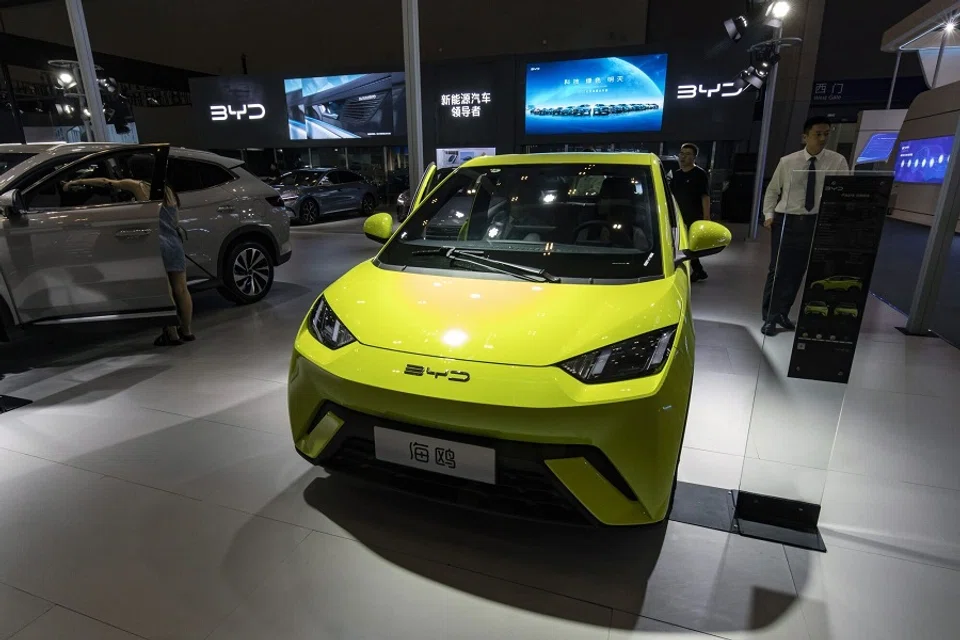
The Chinese production of plug-in electric vehicles (EVs) and battery-operated electric vehicles (BEVs) has grown exponentially in recent years, and China now presents the largest market for EVs in the world.
In 2022, 5.9 million EVs were sold on the Chinese market, amounting to 59% of EVs sold globally. Moreover, domestic brands were able to capture 81% of this expanding market, with BYD occupying the largest share at 29.7%, while Tesla sold 8.8% of these EVs. The Chinese market now boasts 147 brands selling as many as 372 EV models.
In 2023, exports of Chinese EVs are projected to reach 1.3 million units. At the same time, China is expected to overtake Japan as the world's largest car exporter at 4.4 million vehicles in 2023, up from 3.1 million in 2022. Thus, approximately one quarter of the exported cars are electric vehicles, and this share is expected to grow further in the future.
The expansion of Chinese EV manufacturing has been the result of private entrepreneurship buoyed by active government policies since the early 2000s and, in this sense, is a spectacular success of China's industrial and technology policy. But to what extent is such commercial success a benefit for the environment in China or for China's need to reduce carbon emissions?
Favourable policies, subsidies and incentives
China's automotive industries had been established with extensive transfer of technology through sino-foreign joint ventures during the 1990s, and took a leap forward after the country joined the World Trade Organization (WTO) in 2001. The EV industry followed this trend as the Chinese government proposed further development of energy-saving and environmentally friendly electric and hybrid vehicle technologies.
...the most important impetus for the production of new energy vehicles came in 2009 with the Chinese government's regulations concerning subsidies for public procurement for new energy vehicles...
Technological development was also accelerated when two billion RMB was allocated to research and development (R&D) on new energy vehicles in the National High-tech R&D Program (863 Program) launched in 1986. These early efforts encouraged entrepreneurs to enter this industry, including Wang Chuanfu, who established BYD in Shenzhen in 1995, which has become a leading producer of EVs in China.
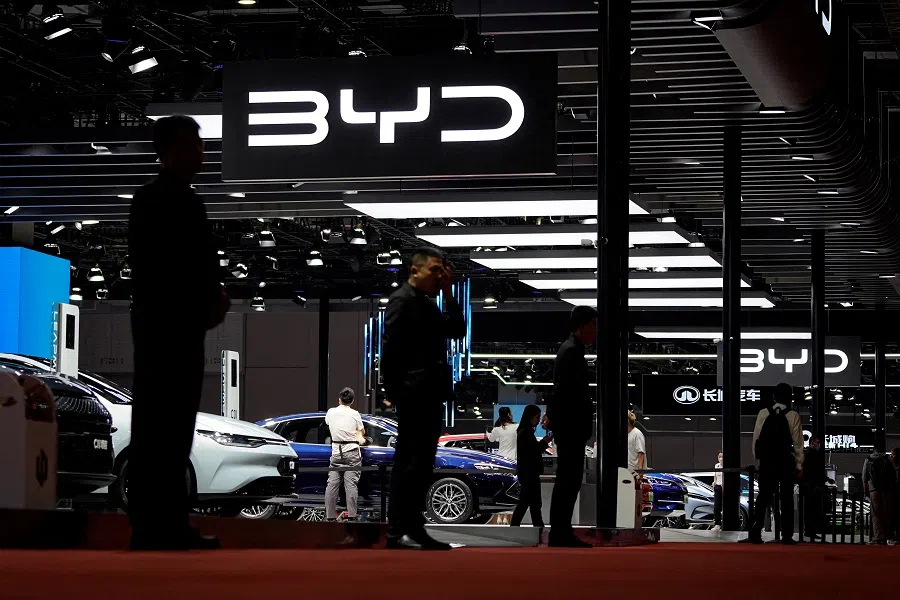
However, the most important impetus for the production of new energy vehicles came in 2009 with the Chinese government's regulations concerning subsidies for public procurement for new energy vehicles, while a policy adopted in 2010 provided subsidies for private purchases of EVs. A plan for the development of new energy vehicles during 2012-2020 was announced by the central government in 2012.
Public subsidies and tax incentives generated a large market for private EV ownership in China. These benefits were extended several times, but were expected to be phased out completely at the end of 2022. However, in spite of the tax incentives becoming a major burden for fiscal budgets, the government recently decided to extend the policy to 2027.
At the same time, the government was encouraging producers with support for crucial supply chains, such as lithium mining and processing, production of batteries and promoting an industrial ecosystem for a range of components such as semiconductors and software. One interesting outcome of these efforts is that China became the leading global producer of rechargeable lithium-ion batteries.
Moreover, the National Development and Reform Commission (NDRC) in 2015, introduced Guidelines for the Development of Electric Vehicle Charging Infrastructure (2015-2020), which led to an expansion of the production of electric vehicle charging piles in China, from around 150,000 in 2016 to more than 5.84 million in March 2023.
... the emissions and other environmental impacts caused by the disposal or recycling of a vehicle are important, but often ignored in policy making.
Climate saver or climate sinner?
China's policy makers are apt to declare that EVs provide major benefits for both the society and the climate. Certainly, the spread of EVs in Chinese urban traffic has served to alleviate some of the severe air pollution that people at the street level have endured. However, there are a number of other environmental issues that cast a gloomier light on the rapid expansion of EVs in China.
First of all, a full understanding of the environmental impact of EVs needs to be considered in terms of their total life cycle, that is, the impact involved in the production, use, and disposal of the vehicle.
A true life-cycle analysis (LCA) must consider greenhouse gas (GHG) emissions arising in the mining and processing of raw materials such as metals for the chassis, plastics in seats, rubber for wheels, lithium for batteries, etc. The LCA would also account for emissions related to the energy required for the production of EVs, as well as emissions generated by providers of electric power during use - i.e. when charging the batteries. Finally, the emissions and other environmental impacts caused by the disposal or recycling of a vehicle are important, but often ignored in policy making.
It may come as a surprise for Chinese customers who purchase and drive EVs that such cars are not so "environmentally-friendly", or "green", as they are led to believe. EVs are definitely not "zero-emission" cars!
... the production of these cars generally generates more emissions than those associated with the production of internal combustion engine vehicles, largely due to the environmental impacts of producing battery packs.
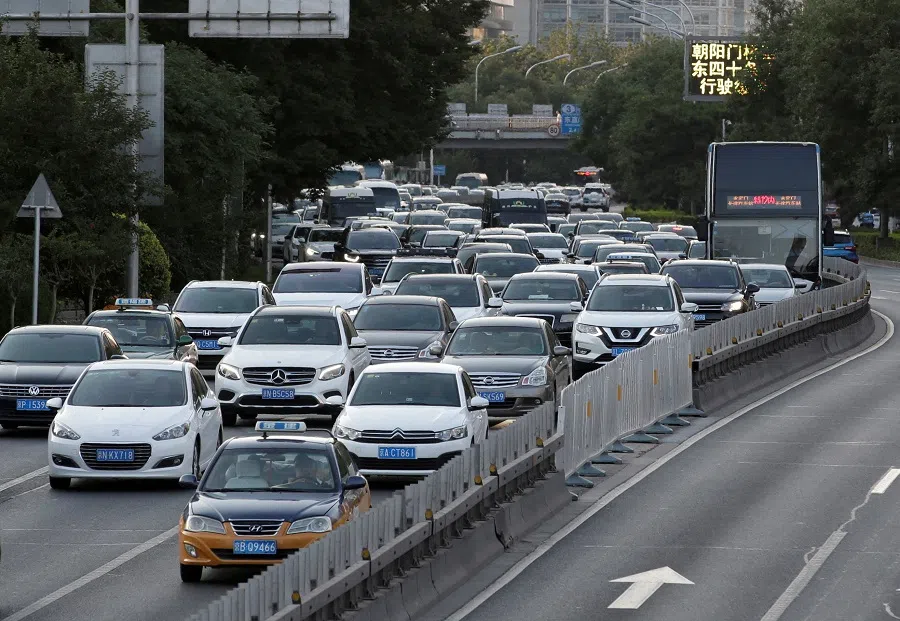
International LCA analysis for GHG emissions of EVs demonstrates that the production of these cars generally generates more emissions than those associated with the production of internal combustion engine vehicles, largely due to the environmental impacts of producing battery packs.
In other words, when you drive off in a newly purchased battery-operated EV with a "green" license plate, you have already contributed more GHG emissions than if you had purchased a car running on petrol. This initial disadvantage may be significantly compensated by lower GHG emissions during the use phase, provided electric power generation is based on renewable energy sources.
This is definitely not the case in China, where 71% of the total electricity generation still relies on thermal utilities, primarily coal-fired power plants. Recently the NDRC proudly announced that the capacity of China's non-fossil fuel energy sources now exceeds 50% of its total installed electricity generation capacity. Unfortunately, much of this capacity is idle, partly due to widespread drought that has affected hydropower production and partly due to the continued curtailment of wind and solar energy. The national electricity grid lacks the capacity to transmit power from the provinces where renewable energy is generated to the provinces where it is needed, despite heavy recent investments in China's grid infrastructure.
One way to show the climate impact of EVs is to measure how long an EV will need to be used before it can compensate for the GHG emissions generated during production - that is, the delay before the vehicle reaches break-even for climate emissions and truly becomes "green".
A recently published study shows that, in China, the average delay is 4.5 years. For 8% of Chinese EVs produced and sold between 2016 and 2018, the delay exceeds the eight-year battery warranty usually offered by EV producers!
They risk ending up in one of the "EV graveyards" that have sprung up across China in recent years.
End-of-life environmental impact
Another important issue for EVs is how they are disposed of when they reach the end of their active use in the economy. In some cases, they have simply been abandoned before the natural service period of their batteries and components, often due to ride-hailing companies that have gone bankrupt. They risk ending up in one of the "EV graveyards" that have sprung up across China in recent years.
Such approaches to dealing with EVs are also compounded by the fact that the market for used EVs remains small, with only 500,000 used passenger electric models sold in 2020. Some EVs lose 67% of their original value after three years, and buying a subsidised new EV is often as cheap as buying a replacement battery. Probably, the general Chinese reluctance to buy second-hand products and used items is also playing a role.
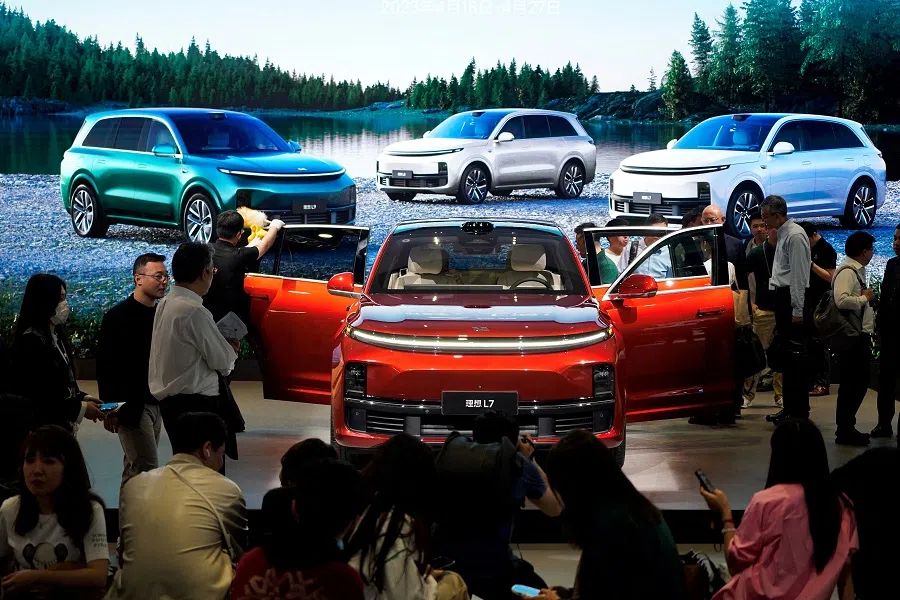
In order to be environmentally friendly, EVs should ideally be easy and cheap to recycle. However, even here the industry faces new challenges. Most EVs use lithium-ion batteries, which offer high energy density and several options for fast recharging, but which end up with capacity lower than 70% and reduced range after five to eight years.
Nevertheless, such batteries at 70% or lower capacity can still be utilised for stationary energy storage, Therefore, battery and EV manufacturer BYD has announced that it will transform old batteries into energy storage systems for renewable energy plants and factories in the future.
Official planners envisage that the recycling of lithium batteries is likely to become a growth point in the new energy market in China, with more investments going to technological innovation in battery disposal and recycling. According to one report, the amount of discarded lithium-ion batteries recycled in China reached 415,000 metric tons in 2022, and is likely to grow further in the future. Of course, if China continues its success at exporting to the emerging EV markets, the recycling problem may become a headache for consumers and governments in those markets instead.
... advanced innovation in core technologies is necessary for Chinese producers to maintain their global position in EV markets.
China's next competitive advantage: technological innovation
It is fair to say that China's EV industries have shown strong entrepreneurial motivation in domestic markets, buoyed by the benefits of government subsidies and tax incentives. In terms of design and comfort, Chinese EVs can now compete with Tesla and other international brands. However, without the economies of scale characterising small EV producers in China, many in the sector are likely to suffer from a price war in domestic and international markets.
Therefore, advanced innovation in core technologies is necessary for Chinese producers to maintain their global position in EV markets. One core technology is the battery, while another is automated driving.
Battery
Chinese producers of batteries already command a leading position in global markets, having improved the minimum range for a charged EV gradually from 80 km in 2013 to 300 km in 2020. Moreover, leading producers have achieved important progress in research and development (R&D) for sodium-ion (Na-ion) batteries, which could offer significant cost and raw material advantages over lithium-ion batteries.
The search for new breakthroughs in this technology has been a high priority for Chinese academic research as well as industry R&D, with the result that China now accounts for 5,486 patents, more than 50% of the total world patents in the field. Moreover, China's largest battery producer for EVs, Contemporary Amperex Technology Co., Limited (CATL), has announced plans to mass-produce and supply sodium-ion batteries for EVs by the end of 2023.
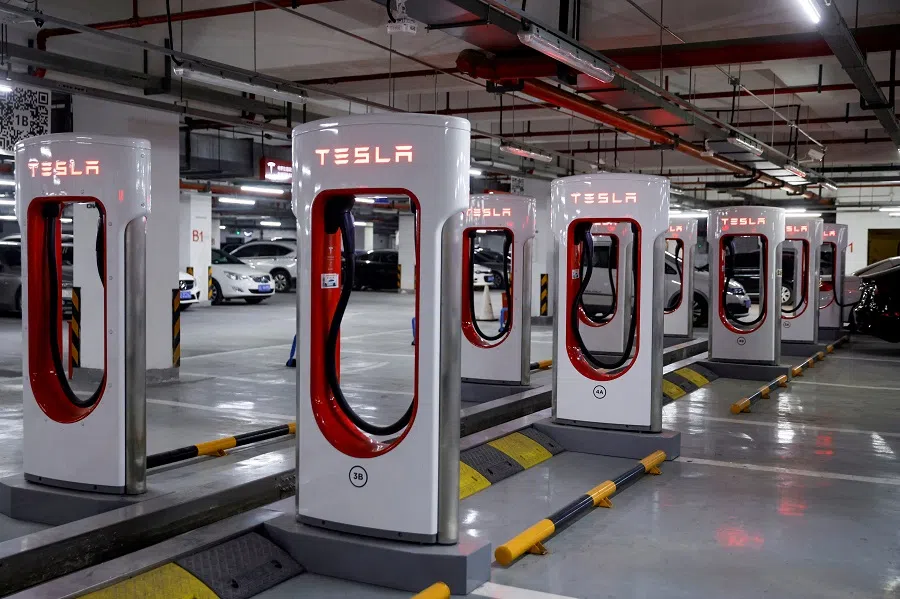
A price hike for lithium carbonate in 2021 driven primarily by demand for EV batteries led to an oversupply of batteries in 2022, accompanied by a price war among EV producers and a sluggish post-pandemic market demand for EVs. This motivated battery and EV makers to seek new markets, especially in Europe and Southeast Asia, while geopolitical tensions with the US have held back the expansion of investments.
...automakers will shape product differentiation in the future with software that provides users with features that allow a more intuitive, personalised and differentiated experience with intelligently assisted driving.
Automated driving
The other core technology helping define private EV competitiveness and brand strength is related to intelligent or automated driving. Although there still exists a gap between Chinese autonomous driving chips and those of overseas manufacturers, the competitive environment in the assisted driving chip industry is driving R&D and technological capabilities forward.
For autonomous driving chips, computing power is not the only criterion, since efficiency and the ability to combine software and hardware have become crucial for competitiveness.
Dedicated efforts to develop and test various levels of automated driving are facilitated in China by the diffusion of smart city networks and cooperation with software giants like Baidu, enabling EV producers to shape product differentiation and competitiveness by leveraging software services and functions that can be continuously upgraded. Thus, Chinese chip manufacturers will need to explore new technology development routes and improve computing power and performance, advancing to the stage of advanced system-on-chip (SoC) performance.
In the final analysis, it is likely that automakers will shape product differentiation in the future with software that provides users with features that allow a more intuitive, personalised and differentiated experience with intelligently assisted driving.
Geopolitical challenges
The commercial success of China's EV industry in domestic and overseas markets has encountered a variety of international reactions, reflecting both the disruption of markets served by leading automobile brands and national priorities for access to critical raw materials and supply chains.
For example, the US introduced the US$369 billion Inflation Reduction Act 2022 which despite its title, can be characterised as "green protectionism", containing elaborate requirements regarding domestic content of components. The EU's 250 billion euro Green Deal Investment Plan includes funding to strengthen the EV supply chain, while the EU's Net Zero Industry Act published in 2023 includes various regulatory measures and incentives such that 90% of the EU's annual demand for batteries is sourced from battery manufacturers located within the bloc.
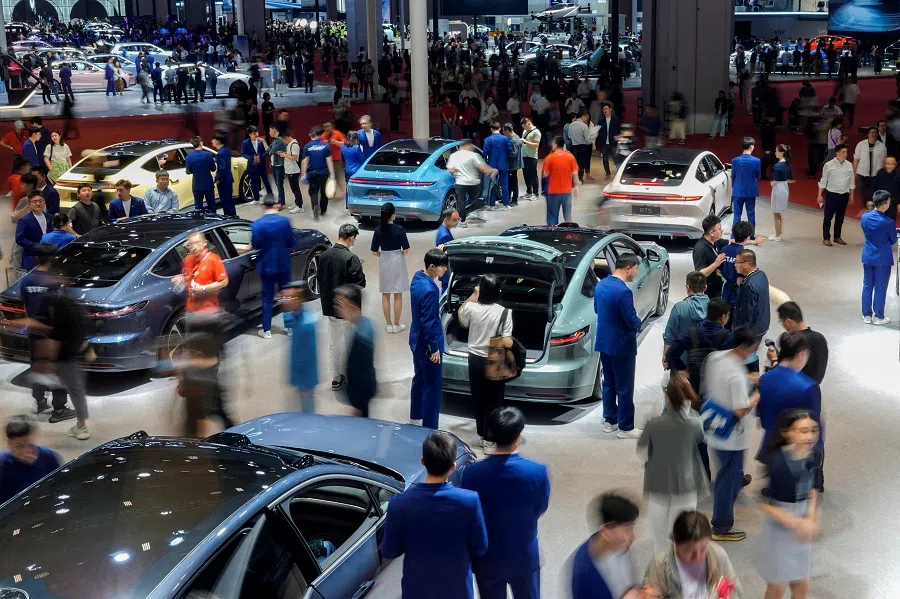
Given the Sino-US geopolitical tensions that have emerged in the last decade, the sentiment among Western observers has often been hostile. For instance, a report in the Financial Times argued that China's restrictions on exports of gallium and germanium in July 2023 exploited China's dominant position in the mining of materials for and production of electric-car batteries, achieving "China's cornering of the clean tech supply chain". The rise and rise of China's clean tech companies poses a massive competitive threat to Western manufacturing industries, including legacy carmakers and energy giants.
Truly climate-friendly?
There is no doubt that the Chinese leadership was considering the prospects for China's emergence as a global leader in clean technologies when designing the industrial policies promoting the development and manufacture of EVs. But it is likely that EVs were also viewed favourably as an instrument to reduce air pollution in China's cities - which is why they made their first publicity drive during the temporary "clean skies" of the Beijing Olympic Games in 2008.
Only when renewable energy is widely available in China will the use of EVs become truly climate friendly.
The EV adventure in China has been successful in some respects, and perhaps not completely so by other criteria. As an industrial policy, the leadership has mobilised markets and private investors to build an industrial ecosystem with extensive supply chains and leading global manufacturers.
At a recent meeting, Ouyang Minggao, a member of the Standing Committee of the National Committee of the Chinese People's Political Consultative Conference, argued that in the development of new energy vehicles, China did not choose to follow others, but took a lot of risk by "changing lanes and overtaking" (换道超车) and reached a leading position through self-reliance and self-improvement in science and technology.
However, as a means to reduce climate change, the effort has tended to "put the cart in front of the horse", because EVs are not particularly environmentally friendly without renewable electricity supply - which comes up against the continued dependence on coal-fired power plants and the difficulties of power transmission over long distances. Only when renewable energy is widely available in China will the use of EVs become truly climate friendly.
Related: China's auto exports belie roadblocks to conquering Europe and US | Chinese smart-car makers get into Tesla's lane | Shanghai Auto Fair: Battle of the Chinese EV giants | China's EV battery boom goes bust | Many challenges ahead as China promotes green hydrogen vehicles | Chinese automakers rev up price war in race for market dominance | The world's EV supply chain is fracturing



![[Big read] Love is hard to find for millions of rural Chinese men](https://cassette.sphdigital.com.sg/image/thinkchina/16fb62fbcf055b710e38d7679f82264ad682ce8b45542008afeb14d369a94399)
![[Big read] Paying for pleasure: Chinese women indulge in handsome male hosts](https://cassette.sphdigital.com.sg/image/thinkchina/c2cf352c4d2ed7e9531e3525a2bd965a52dc4e85ccc026bc16515baab02389ab)
